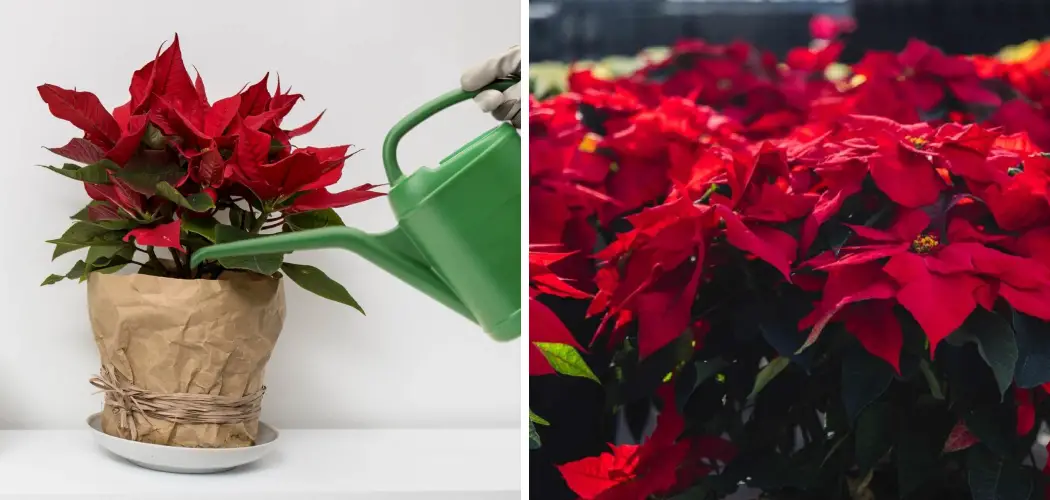Poinsettias are a popular choice for indoor plants, especially during the holiday season, thanks to their vibrant red and green foliage. However, keeping them healthy and thriving requires proper care, particularly when it comes to watering.
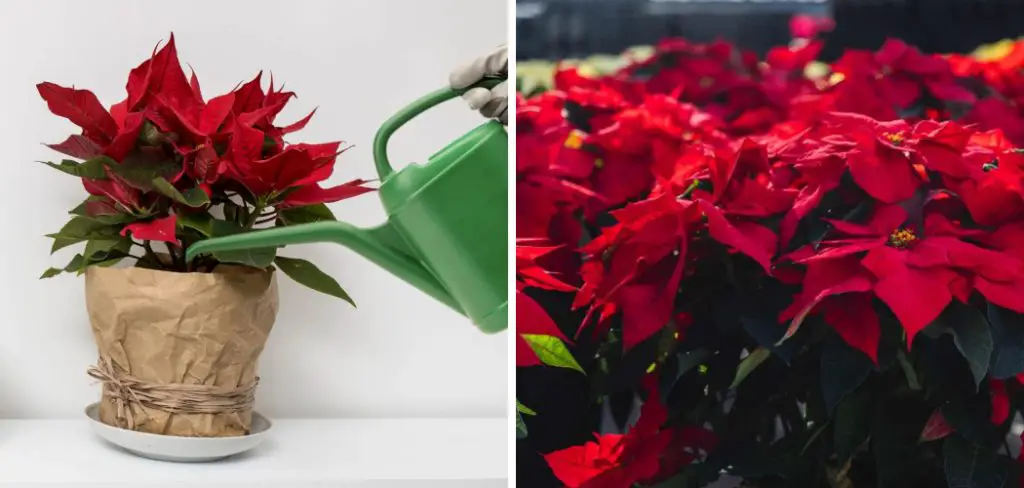
One innovative method to ensure your poinsettias receive the right amount of water without overdoing it is using ice cubes. This technique simplifies the watering process and helps maintain the ideal moisture level for your plant, ensuring its longevity and beauty throughout the season. In this blog post on how to water poinsettias indoors with ice cubes, we will discuss the benefits of this method and provide a step-by-step guide on how to use it effectively.
Benefits of Watering Poinsettias with Ice Cubes
Regulates Watering:
Poinsettias are sensitive to overwatering, which can lead to root rot and other issues. Ice cubes provide a controlled and gradual release of water, preventing the plant from getting too much moisture at once.
Prevents Wilting:
Poinsettias can wilt if they don’t receive enough water regularly. With ice cubes, you can ensure a consistent water supply for your plant, keeping it hydrated and healthy.
Easy to Use:
Watering with ice cubes is a simple process that anyone can do, making it convenient for busy individuals or those new to gardening.
Encourages Nutrient Absorption:
As the ice cubes melt slowly, the nutrients in the soil get redistributed evenly, ensuring proper absorption by the roots and promoting healthy growth.
8 Step-by-step Guidelines on How to Water Poinsettias Indoors With Ice Cubes
Step 1: Choose the Right Container
Selecting an appropriate container for your poinsettia is crucial to its health and the effectiveness of the ice cube watering method. Ensure the pot has adequate drainage holes to prevent water from pooling at the bottom, which can lead to root rot. A container that fits the size of the plant’s root ball without being too large is ideal.
This helps maintain the soil’s moisture balance and allows the ice cubes to distribute water evenly as they melt. Additionally, consider using a decorative cachepot to enhance the visual appeal of your poinsettia display.
Step 2: Prepare the Ice Cubes
Creating ice cubes specifically for your poinsettias is a straightforward task. Use clean, filtered water to make the ice cubes, as using tap water with high mineral content can potentially harm the plant over time. Fill an ice tray with the filtered water and place it in the freezer until the cubes are completely frozen.
The number of ice cubes you’ll need depends on the size of your poinsettia and the room temperature; generally, 2-3 medium-sized ice cubes per watering session should suffice. This gradual release of water ensures that your poinsettia receives a consistent and adequate supply of moisture, promoting healthy growth and vibrant foliage.
Step 3: Watering Schedule
Establishing a regular watering schedule is essential for maintaining your poinsettia’s health. Begin by determining the specific needs of your plant; generally, watering once a week with ice cubes should be sufficient. However, you may need to adjust the frequency based on the ambient temperature and humidity levels in your home.
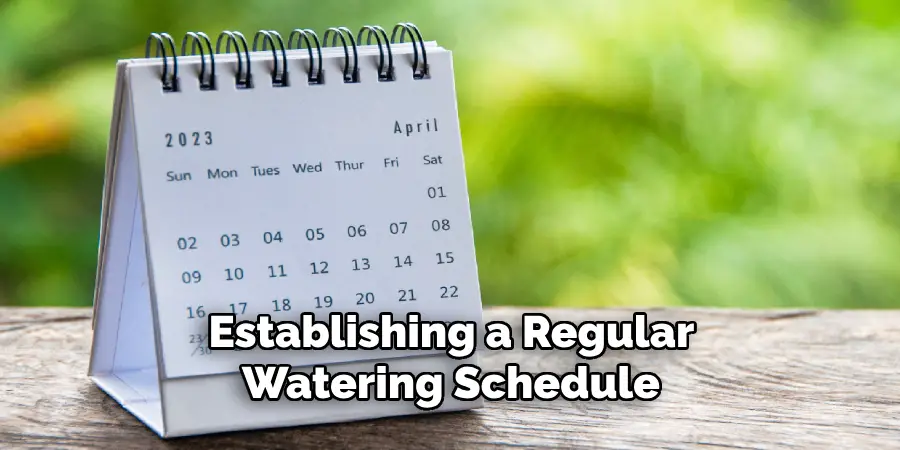
During warmer months or in dryer indoor environments, you might need to place ice cubes around your poinsettia more frequently. Conversely, in cooler conditions, you can reduce the number of ice cubes or water less often.
Monitor the soil’s moisture level regularly by checking it with your finger; it should feel slightly damp but not overly wet or dry. By developing a consistent watering routine and adjusting as needed, you can ensure your poinsettia remains healthy and flourishing throughout the year.
Step 4: Remove Excess Water
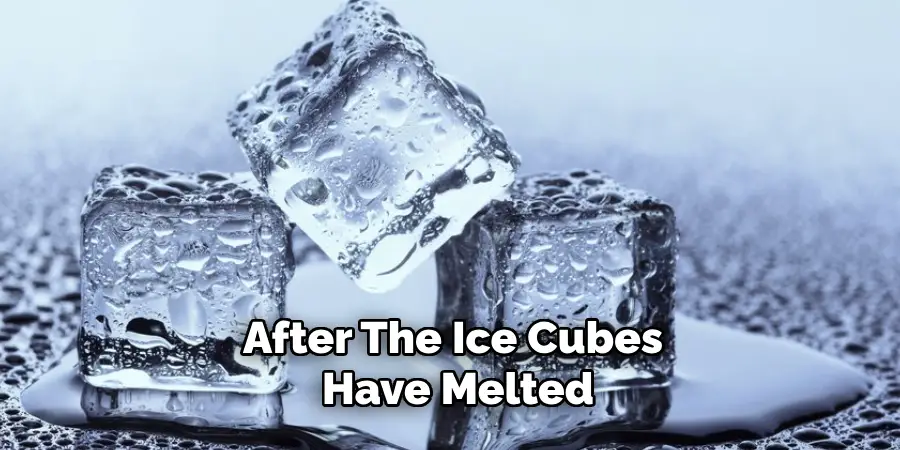
After the ice cubes have melted, it is essential to check for any excess water that may have been collected in the saucer or cachepot beneath the poinsettia’s container. Excess water can lead to root rot, which is detrimental to the plant’s health. Carefully lift the poinsettia container and pour out any accumulated water from the saucer.
Additionally, ensure that the drainage holes remain unobstructed to promote proper water flow. By routinely removing excess water, you help maintain an optimal moisture balance in the soil, allowing your poinsettia to thrive and display its vibrant colors throughout the season.
Step 5: Avoiding Direct Contact with the Leaves
When placing the ice cubes in the pot, it is crucial to avoid direct contact with the leaves of the poinsettia. The cold temperatures from the ice cubes can damage the delicate foliage, leading to potential browning or wilting of the leaves. Instead, position the ice cubes around the base of the plant, ensuring they are in contact with the soil but not touching the leaves or stems directly.
This method allows the water to slowly seep into the soil as the ice melts, providing the roots with adequate moisture without risking harm to the plant’s vibrant foliage. By carefully arranging the ice cubes, you can safeguard the health and aesthetic appeal of your poinsettia.
Step 6: Monitor the Plant’s Health
Regularly checking on your poinsettia for any signs of water stress or other issues is crucial for its well-being. If you notice wilted or discolored leaves, it could be an indication that your plant isn’t receiving enough water. Adjust the amount of ice cubes used accordingly, and monitor the soil’s moisture level to ensure it remains consistently damp but not overly wet.
Conversely, if you see yellowing or drooping leaves, this could mean that your poinsettia is getting too much water. In this case, reduce the frequency of ice cube watering and allow the soil to dry out slightly before the next watering session. By paying attention to your plant’s visual cues, you can ensure its health and address any issues promptly.

Step 7: Fertilizing Poinsettias
Fertilizing poinsettias is not necessary during the holiday season when they are in bloom. However, once the blooming period is over, you can start fertilizing your poinsettia with a balanced fertilizer every 2-3 weeks. Use a water-soluble fertilizer and mix it with the melted ice cubes according to the manufacturer’s instructions.
The slow release of nutrients from the fertilized ice cubes helps promote healthy growth and vibrant foliage throughout the year. Additionally, avoid fertilizing during winter months when your plant may be in dormancy or resting phase. Resume fertilization once new growth appears in spring.
Step 8: Pruning Poinsettias
Poinsettias naturally produce long stems, which can become leggy and unappealing over time. To maintain a compact and bushy appearance, prune your poinsettia in early spring before new growth begins. Using sharp pruning shears, trim back the longest stems to encourage branching and promote fuller foliage.
You can also remove any dead or damaged leaves throughout the year to keep your plant looking healthy and vibrant. By regular pruning, you can help your poinsettia maintain its desired shape and size while promoting new growth for future blooms.
Following these steps and tips on how to water poinsettias indoors with ice cubes can help you keep your poinsettia healthy, vibrant, and beautiful throughout the year. So next time you receive or purchase a poinsettia, don’t be intimidated by its delicate appearance; with proper caring and attention, it can be a long-lasting addition to your home’s festive decorations.
Frequently Asked Questions
Q: Can I Use Regular Ice Instead of Ice Cubes to Water My Poinsettia?
A: Yes, you can use regular ice as long as it is made from clean and filtered water. Simply place the same amount of regular ice around the base of your poinsettia as you would with ice cubes.
Q: How Often Should I Water My Poinsettia with Ice Cubes?
A: The frequency of ice cube watering depends on various factors such as temperature, humidity, and the size of your poinsettia. Generally, once a week is sufficient, but you may need to adjust accordingly based on your plant’s needs.
Q: Can I Use Other Methods to Water My Poinsettia Besides Ice Cubes?
A: Yes, there are various other methods for watering poinsettias, including using a traditional watering can or submerging the pot in water for a few minutes. However, the ice cube method is a convenient and foolproof way to provide your poinsettia with consistent moisture without risking over or underwatering.
Frequently Asked Questions
Q: Can I Use Regular Watering Methods Instead of Ice Cubes?
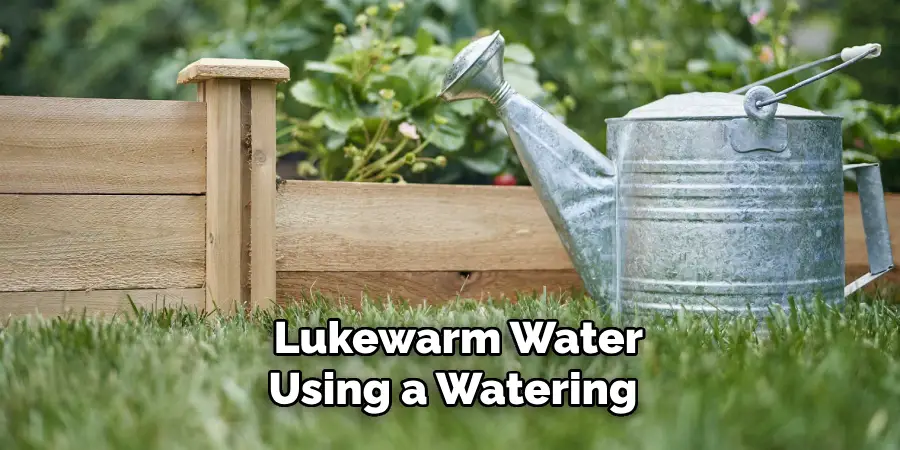
A: Yes, you can water your poinsettia at room temperature or lukewarm water using a watering can. Just make sure not to overwater and monitor the soil’s moisture level regularly.
Q: My Poinsettia Is Drooping, What Should I Do?
A: This could be due to insufficient watering or overwatering. Adjust your watering schedule and check for any signs of root rot. If the problem persists, consult a gardening expert for further advice.
Q: Can I Keep My Poinsettia After The Holiday Season?
A: Yes, with proper care and maintenance, poinsettias can last throughout the year. Follow our tips on pruning and fertilizing to help your plant thrive and potentially re-bloom next holiday season.
Q: Are Poinsettias Toxic to Pets?
A: Yes, poinsettias are mildly toxic to cats and dogs. It is best to keep them out of reach or opt for artificial plants if you have curious pets at home.
Conclusion
By following these simple steps on how to water poinsettias indoors with ice cubes, you can effectively water your poinsettias with ice cubes and ensure their health and vitality throughout the year.
Remember to use filtered water, establish a consistent watering schedule, remove excess water, avoid direct contact with leaves, monitor plant health regularly, fertilize and prune as needed.
With proper care and attention, your poinsettia will continue to display its beautiful colors for many holiday seasons to come. Happy gardening!
About
Angela is the chief editor of Indoorense. She began her career as an interior designer before applying her strategic and creative passion to lifestyle and home.
She has close to 15 years of experience in creative writing and online content strategy for housekeeping and cleaning,home decorations as well as other efforts.
She loves her job and has the privilege of working with an extraordinary team. She lives with her husband, two sons, and daughter in Petersburg. When she’s not busy working she spent time with her family.

